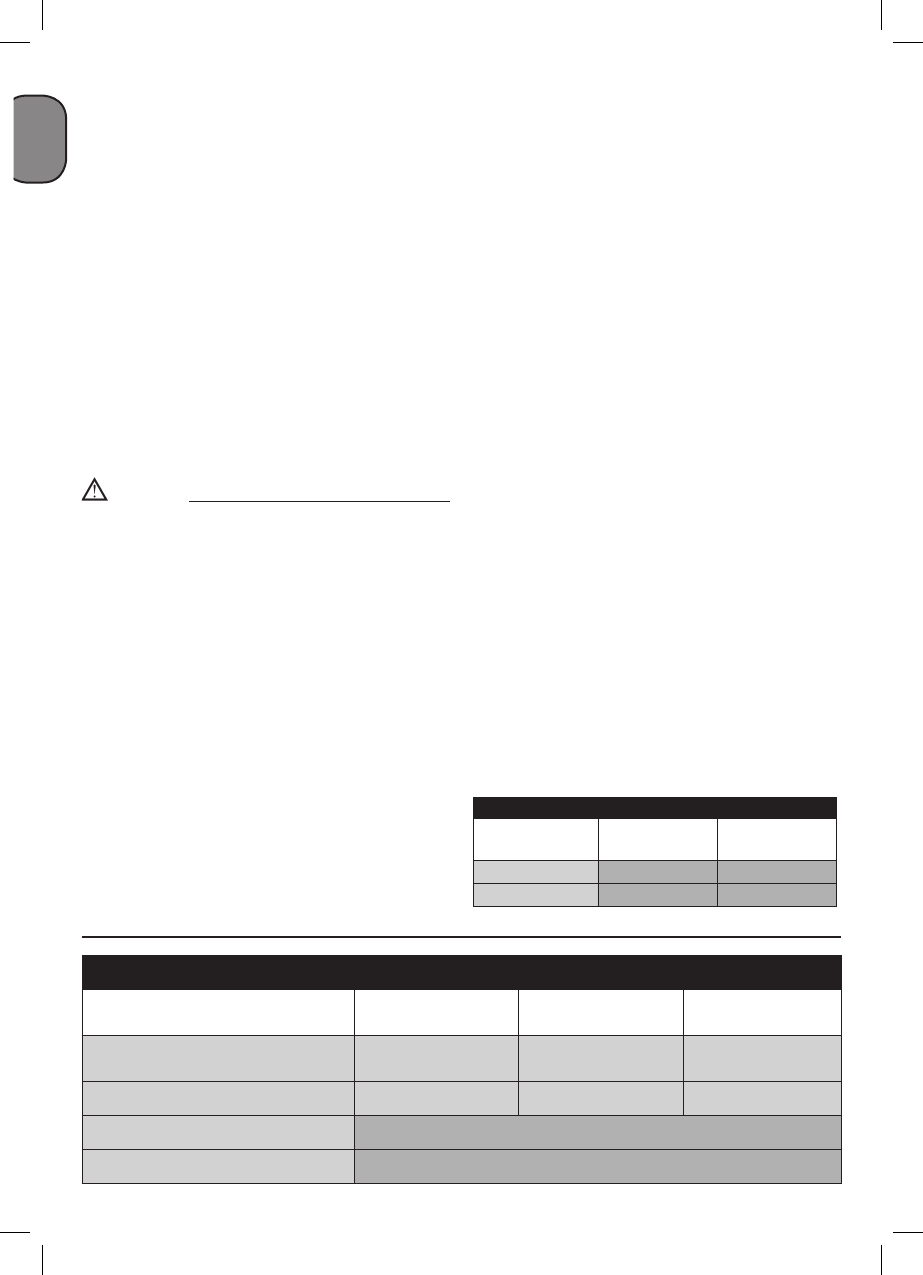Компрессоры Stanley D 211/8/24 100546056 - инструкция пользователя по применению, эксплуатации и установке на русском языке. Мы надеемся, она поможет вам решить возникшие у вас вопросы при эксплуатации техники.
Если остались вопросы, задайте их в комментариях после инструкции.
"Загружаем инструкцию", означает, что нужно подождать пока файл загрузится и можно будет его читать онлайн. Некоторые инструкции очень большие и время их появления зависит от вашей скорости интернета.

24
G
B
6.1 Cleaning
●
Keep the safety devices free of dirt and dust as far
as possible. Wipe the equipment with a clean cloth
or blow it with compressed air at low pressure.
●
We recommend that you clean the appliance imme
-
diately after you use it.
●
Clean the appliance regularly with a damp cloth and
some soft soap. Do not use cleaning agents or sol
-
vents; these may be aggressive to the plastic parts
in the appliance. Ensure that no water can get into
the interior of the appliance.
●
You must disconnect the hose and any spraying tools
from the compressor before cleaning. Do not clean the
compressor with water, solvents or the like.
6.2 Condensation water
The condensation water must be drained off each day
by opening the drain valve (ref. 11) (on the
bottom of
the pressure vessel).
Warning!
The condensation water from the pressure vessel
will contain residual oil. Dispose of the condensa-
tion water in an environmentally compatible man-
ner at the appropriate collection point.
6.3 Safety valve (ref. 10)
The safety valve has been set for the highest permit
-
ted pressure of the pressure vessel. It is prohibited to
adjust the safety valve or remove its seal. Actuate the
safety valve from time to time to ensure that it works
when required. Pull the ring with sufficient force until
you can hear the compressed air being released. Then
release the ring again.
6.4 Check the oil level at regular intervals
Place the compressor on a level and straight surface.
Check the oil level by means of:
● The sight glass (fig. 16),
● Or the oil dipstick (figure 17): unscrew the oil dipstick
(Fig. 8b / reference 14) by turning it counter-clock-
wise and wipe the dipstick. Re-insert the dipstick into
the filler opening as far as it will go but do not screw
it in. Pull out the dipstick, hold it horizontally and read
off the oil level.
The oil level must be between the two marks MAX and
MIN on the oil dipstick (Fig. 17) (or oil level window,
fig. 16).
Changing the oil: Recommended oil: SAE 15W/40 or
an alternative of the same quality.
It should be refilled for the first time after 100 hours
of operation. Thereafter the oil should be drained and
refilled after every 300 hours in service.
6.5 Changing the oil
Switch off the engine and pull the mains plug out of
the socket. After releasing any air pressure you can
unscrew the oil drainage screw (ref. 15) from the com-
pressor pump. To prevent the oil from running out in an
uncontrolled manner, hold a small metal chute under
the opening and collect the oil in a vessel. If the oil
does not drain out completely, we recommend tilting
the compressor slightly.
Dispose of the old oil at a drop-off point for old oil.
When the oil has drained out, re-fit the oil drainage
screw (ref. 15). Fill new oil through the oil filler opening
(ref. 14) until it comes up to the required level. Then
reinsert the oil dipstick (ref. 14).
6.6 Tightening of head tension rods
● Check that all screws (in particular those of the head
of the unit) are tightly drawn up.
● The control must be performed before the first start-up
of the compressor and subsequently before the first
intensive use in order to restore the correct closing
torque value modified as a result of heat expansion.
TIGHTENING OF HEAD TENSION RODS
Nm
Min. torque
Nm
Max. torque
Screw M6
9
11
Screw M8
22
27
MAINTENANCE RESUMPTIVE TABLE
FUNCTION
AFTER THE FIRST
100 HOURS
EVERY 100 HOURS EVERY 300 HOURS
Cleaning of intake filter and/or
substitution of filtering element
●
Change of oil
●
●
Tightening of head tension rods
At start-up and after the first hour of work
Draining tank condensate
Periodically and at the end of work































































































































































